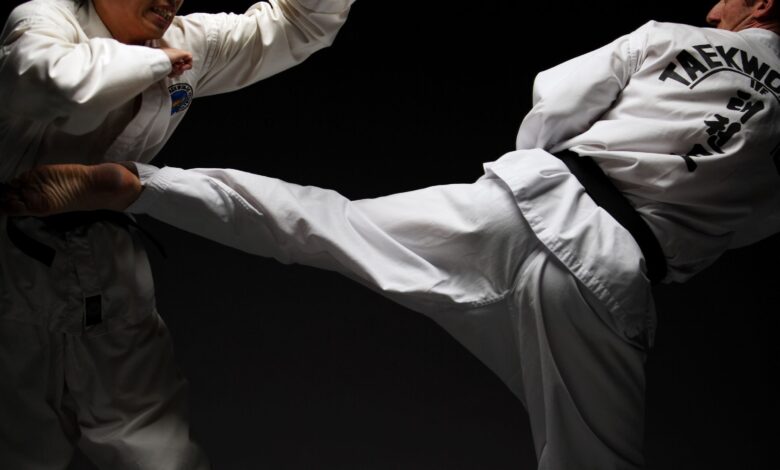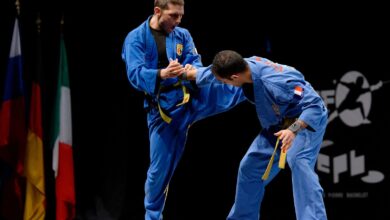The History of Taekwondo: Korea’s National Martial Art

Martial Arts: Taekwondo is a Korean martial art known for its dynamic kicking techniques, speed, and powerful strikes. It is one of the most widely practiced martial arts globally and an official Olympic sport. Combining elements of self-defense, discipline, and sport, Taekwondo has evolved into a globally recognized system that embodies both physical prowess and philosophical principles.
Origins and Development
Taekwondo traces its origins to ancient Korean martial arts, particularly Taekkyeon, Subak, and Gwonbeop, which were practiced by Korean warriors, including the Hwarang (elite youth warriors of the Silla Dynasty). However, the modern form of Taekwondo began to take shape in the mid-20th century.
Korean Martial Arts Before Taekwondo
- Taekkyeon (택견): An indigenous Korean martial art focusing on fluid, high, and low kicks, along with footwork.
- Gwonbeop (권법): A system of hand techniques influenced by Chinese martial arts.
- Japanese Influence: During the Japanese occupation (1910-1945), Japanese martial arts such as Karate, Judo, and Kendo were introduced to Korea, influencing many early Taekwondo practitioners.
Post-War Development (1940s-1950s)
After Korea regained independence in 1945, various martial arts schools called Kwans emerged, each teaching its own variation of Korean and foreign martial arts. The five major Kwans were:
- Chung Do Kwan
- Moo Duk Kwan
- Song Moo Kwan
- Ji Do Kwan
- Chang Moo Kwan
In the 1950s, efforts were made to unify these Kwans into a single national martial art. General Choi Hong Hi, a pivotal figure in Taekwondo’s history, coined the term “Taekwondo” in 1955, emphasizing the art’s focus on hand (Tae) and foot (Kwon) techniques, along with a philosophical way of life (Do).
Formalization and Global Expansion
Korean Taekwondo Association (KTA) and International Taekwondo Federation (ITF)
- In 1959, the Korean Taekwondo Association (KTA) was established to standardize the martial art.
- In 1966, General Choi founded the International Taekwondo Federation (ITF), promoting Taekwondo internationally.
World Taekwondo Federation (WTF) and Olympic Recognition
- In 1973, the World Taekwondo Federation (WTF) (now called World Taekwondo, WT) was established to further globalize Taekwondo.
- In 1988, Taekwondo was included as a demonstration sport in the Seoul Olympics.
- In 2000, Taekwondo became an official Olympic sport in the Sydney Games.
Principles and Techniques
Taekwondo is distinguished by its emphasis on kicking techniques, speed, and agility. Key aspects include:
- High, Spinning, and Jumping Kicks: Techniques like the roundhouse kick (Dollyo Chagi), spinning hook kick (Dwi Huryeo Chagi), and axe kick (Naeryeo Chagi) define the art.
- Hand Techniques: Taekwondo incorporates punches, blocks, and strikes, though its emphasis remains on kicks.
- Forms (Poomsae and Tul): Practitioners learn sequences of movements for discipline and competition.
- Sparring (Kyorugi): Olympic-style Taekwondo emphasizes full-contact sparring with a point-scoring system.
- Self-Defense (Hoshinsul): Practical applications for real-world self-defense situations.
Philosophy and Tenets
Taekwondo emphasizes mental discipline, respect, and ethical conduct. Practitioners follow five tenets:
- Courtesy (Ye Ui)
- Integrity (Yom Chi)
- Perseverance (In Nae)
- Self-Control (Guk Gi)
- Indomitable Spirit (Baekjul Boolgool)
Influence on Modern Martial Arts
Taekwondo has significantly influenced mixed martial arts (MMA) and other striking-based combat sports. Many MMA fighters incorporate Taekwondo kicks for their speed and effectiveness in competition.
From its ancient Korean roots to its modern Olympic status, Taekwondo has become a global martial art celebrated for its discipline, powerful techniques, and competitive nature. As it continues to evolve, it remains a symbol of Korean heritage and a respected martial art worldwide.



